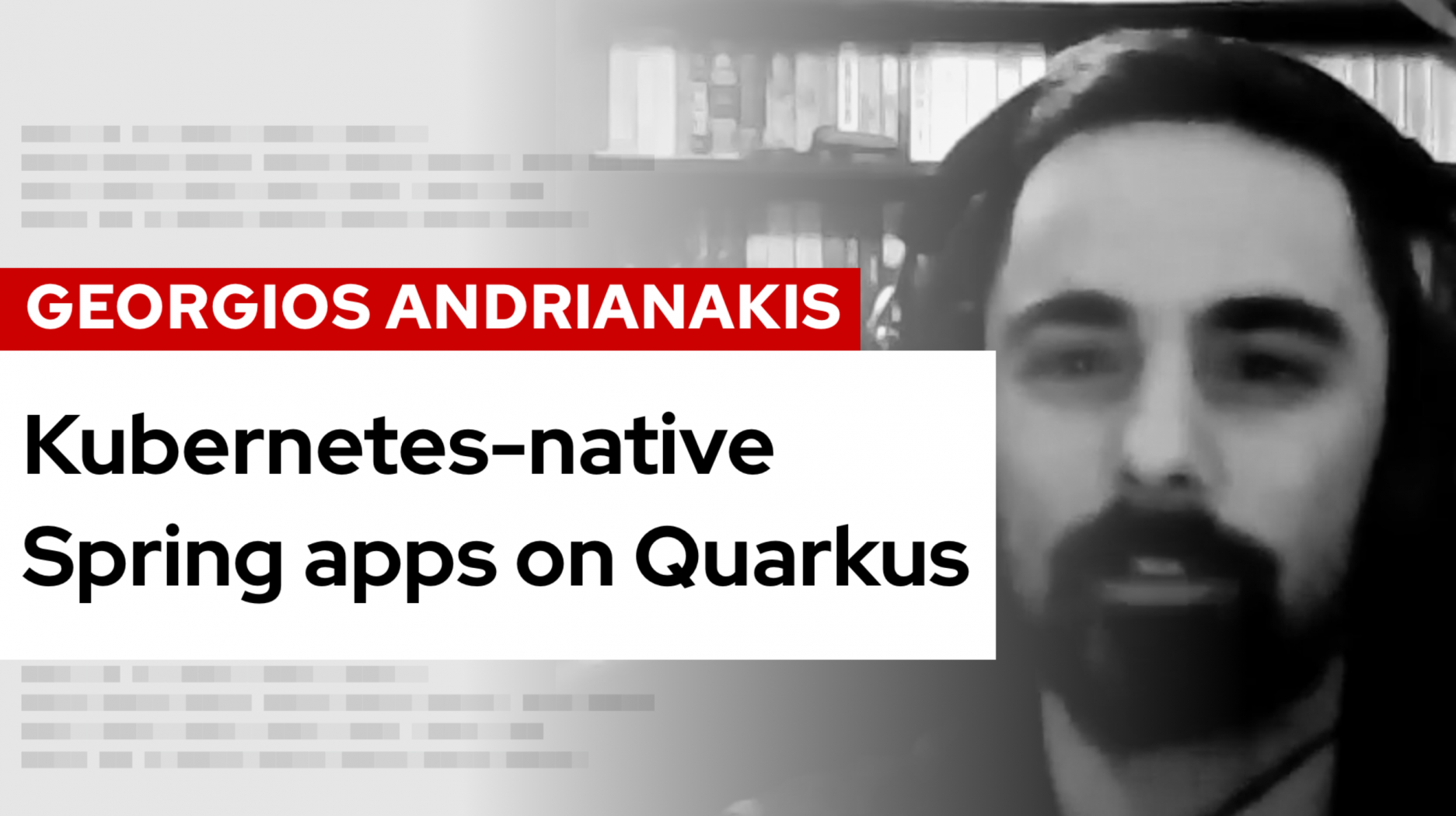
Crafting Kubernetes Operators
This DevNation Tech Talk guides you through creating and deploying a Kubernetes Operator using Red Hat's Operator Framework and SDK.

This DevNation Tech Talk guides you through creating and deploying a Kubernetes Operator using Red Hat's Operator Framework and SDK.

Explore two of JBoss EAP 7.3's new capabilities and their benefits: splitting images into build versus runtimes, and trimming configurations with Galleon.


Learn how to build a monitoring system for Ceph Storage using Zabbix for better visibility into your storage system's health.

In the second part of this series, we walk you through customizing Fedora CoreOS and making use of its immutable and atomic nature.

Learn how Fedora CoreOS helps you create an immutable, atomically-managed infrastructure, and then set up your own instance.

Learn how to configure and run a QEMU-based VM outside of libvirt with virt-manager.

Learn how OpenShift Actions let you deploy to your Red Hat OpenShift cluster directly from your GitHub repository, via GitHub Actions.

Learn how to test OpenShift 4.2 setup on OpenStack 13, and take advantage of OpenStack's programmatic API-driven approach.

Use OpenShift's projectRequestTemplate to add default controls for the resources that a project is allowed to consume.

We show you how to use third-party APIs in Operator-SDK projects using the Operator Framework, which helps you develop tools that simplify Kubernetes-native application management.

Learn how to enable the use of multiple Ansible vault passwords through vault IDs to encrypt a file and a string.

Walk through an example of how to deploy a simple Quarkus application to a Kubernetes cluster, which requires adjustments to your application's properties.

We show you how to implement logic that only occurs if and when your Operator is running on a specific Kubernetes platform.

We provide a step-by-step visual tutorial describing how to create a simple virtual database using Red Hat Integration's data virtualization Operator.

We explore the developer improvements added to OpenShift 4.3, which improves upon the features that were introduced in 4.2 and introduces new flows and features for the developer.

This article describes the oc-inject utility, which works on any Linux system that includes Python 3, the ldd utility, and the Red Hat OpenShift command-line tool oc.

To successfully debug a containerized application, it is necessary to understand the constraints and how they determine which debugging tools can be used.

Red Hat AMQ Streams is a massively scalable, distributed, and high performance data streaming platform based on the Apache Kafka project. AMQ Streams provides an event streaming backbone that allows microservices and other application components to exchange data with extremely high throughput and low latency.

DevNation Live tech talk - Kubernetes-native Spring apps on Quarkus

In this DevNation tech talk, you’ll learn about testing in production and speeding your release cycle from Alex Soto.

DevNation live tech talk - Serverless Kafka on Kubernetes


Learn how to install 3scale multi-tenant using the command line with just seven commands.

What does one developer's evolutionary journey have to do with Gene Kim and his book The Phoenix Project?